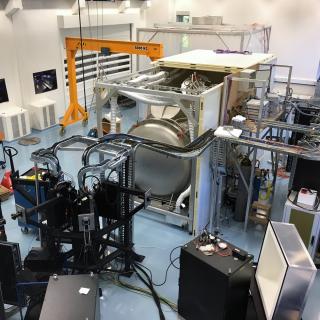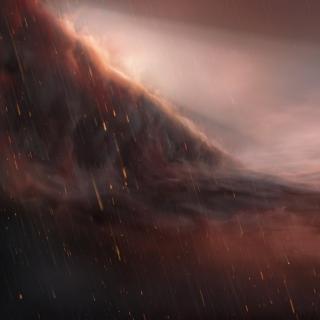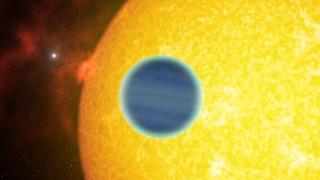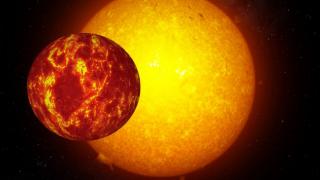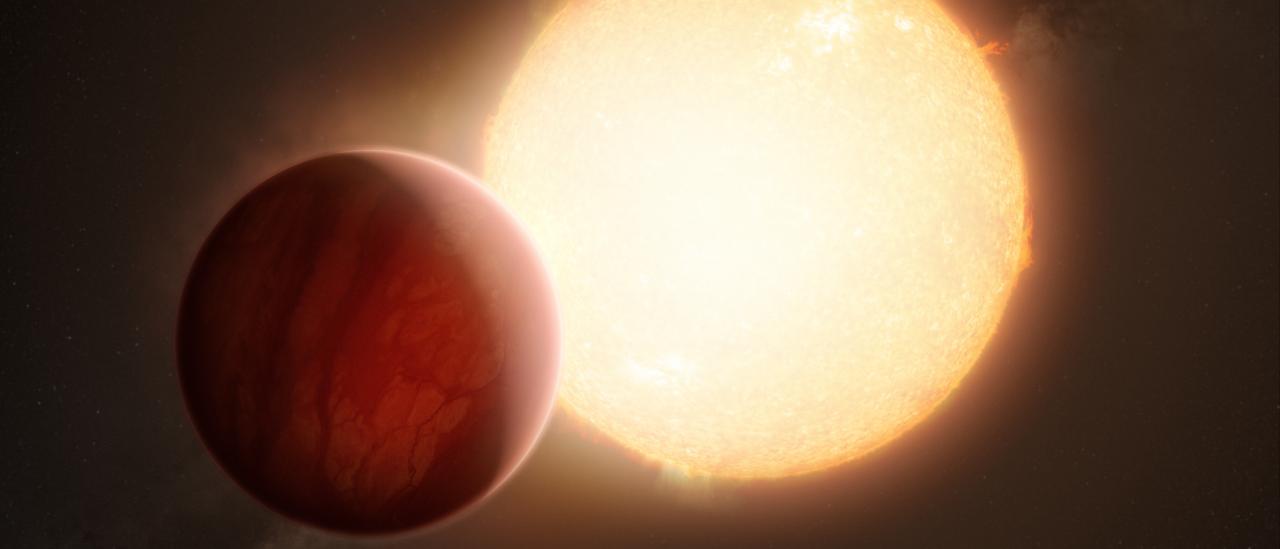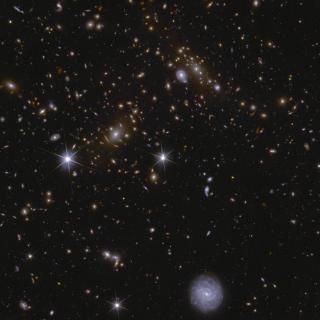An international team of astronomers, in which IAC researchers participate, have discovered barium, the heaviest element ever found in an exoplanet atmosphere. It has been discovered at high altitudes in the atmosphere of the exoplanets WASP-76 b and WASP-121 b, two ultra-hot gas giants. The unexpected discovery, made possible by the ESPRESSO instrument at the European Southern Observatory's Very Large Telescope (ESO's VLT), raises questions about what these exotic atmospheres may look like.
WASP-76 b and WASP-121 b are no ordinary exoplanets. Both are referred to as ultra-hot Jupiters as they are comparable in size to our own Jupiter whilst having extreme surface temperatures soaring above 1.000 °C. This is due to their close proximity to their suns which also means an orbit around their host star takes only one to two days. This gives these planets rather exotic features; in WASP-76 b, for example, astronomers suspect it rains iron.
But even so, the scientists were surprised to find barium, which is 2.5 times heavier than iron, in the upper atmosphere of both WASP-76 b and WASP-121 b. “This was in a way an ‘accidental’ discovery,” says Tomás Azevedo Silva, a PhD student at University of Porto and part of the Instituto de Astrofísica e Ciências do Espaço (IA) in Portugal who led the study. “We were not expecting or looking for barium in particular and had to cross-check that this was actually coming from the planet since it had never been seen in any exoplanet before.”
The fact that barium was detected in the atmosphere of both of these ultra-hot Jupiters suggests that this category of planets might be even stranger than previously thought. Although we do occasionally see barium in our own skies, as the brilliant green colour in fireworks, the question for scientists is what natural process could cause this heavy element to be at such high altitudes in these exoplanets.
Strange worlds yet to be understood
In the study of exoplanet atmospheres ultra-hot Jupiters are extremely useful. Alejandro Suárez Mascareño, an IAC research and co-author of this study, explains: “Being gaseous and hot, their atmospheres are very extended and are thus easier to observe and study than those of smaller or cooler planets”.
To be able to determine the composition of the thin layer of gas surrounding an exoplanet requires very specialised equipment. The team used the ESPRESSO instrument on ESO’s VLT in Chile, which can analyse star light that has been filtered through an exoplanet’s atmosphere. Alejandro adds: “The high precision of ESPRESSO has made it possible to clearly detect several elements in the atmosphere of WASP-76 b and WASP-121 b, including barium”.
These new results show that we have only scratched the surface of the mystery of exoplanets. Jonay González Hernández, an IAC researcher and co-author of this study, concludes: “With future instruments such as the high-resolution ANDES, which will operate on ESO’s upcoming Extremely Large Telescope (ELT), astronomers will be able to study atmospheres of exoplanets big and small, including those of rocky planets similar to Earth, in much greater depth and provide more clues to these strange worlds.”
Emma Esparza Borges, Enric Pallé and Rafael Rebolo have also participated in the study as research staff at the lAC.
Article: T. Azevedo Silva et al: "Detection of Barium in the atmospheres of ultra-hot gas giants WASP-76b & WASP-121b", Astronomy & Astrophysics. DOI:
Contacts at the IAC:
Jonay I. González Hernández, jonay.gonzalez [at] iac.es (jonay[dot]gonzalez[at]iac[dot]es)
Alejandro Suárez Mascareño, alejandro.suarez.mascareno [at] iac.es (alejandro[dot]suarez[dot]mascareno[at]iac[dot]es)

